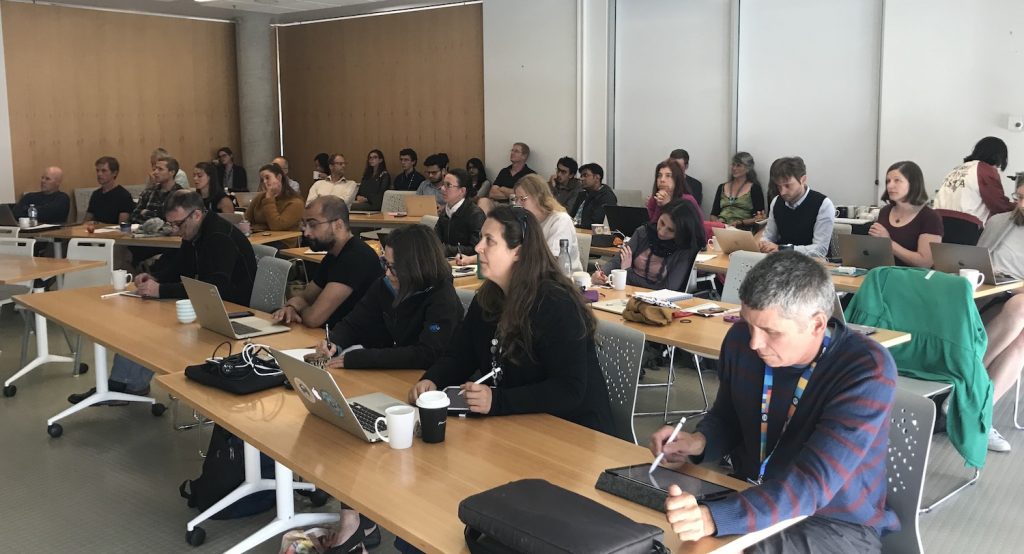by Julie Arblaster
Two workshops, the Sea Ice Modelling Workshop and Centre of Excellence for Climate Extremes “Southern Annular Mode (SAM) Cluster” workshop were held together at the Institute for Marine and Antarctic Studies in Hobart from February 19-21.
Approximately 40 people registered for each workshop from across the CLEX universities and partners, with many others from the wider Hobart climate community also dropping by. Both workshops were a combination of research talks and discussion, with a joint session bringing the two communities together on the topic of SAM and sea ice.
The sea ice modelling workshop covered the first day, with experts in sea ice observations, model development and prediction coming together to discuss their latest science and plans. Updates were provided on the integration of new processes into the sea ice model, such as direct wave-ice interaction or bio-geochemical processes, data assimilation and observing systems.
The workshop was timed to coincide with a visit from Dr Elizabeth Hunke, the lead developer of the Los Alamos National Laboratory’s Sea Ice Model (CICE) and the CICE consortium in sea ice model development. CICE is the sea ice component of many models around the world used for climate modelling and prediction, including ACCESS. Dr Hunke provided a summary on the recently released CICE6, which provides a critical rewrite of the code architecture.

The joint session followed and focused primarily on understanding the rapid and dramatic decline in Antarctic sea ice extent in 2016 and its sustained declines since, with both observational and modelling talks (one via Zoom by Partner Investigator Jerry Meehl from NCAR) and a lively discussion about its causes and the likelihood of sustained declines into the future.
This led into the SAM Cluster workshop with background and research talks on Southern Hemisphere extratropical variability and its impacts across all components of the Earth system. The final day of the workshop consisted of some fantastic research presentations from our PhD students followed by discussion sessions around four topics:
- Atmosphere-ice-ocean interactions,
- Scale interactions and extremes,
- SAM changes over time and
- Atmospheric forcing for ocean/sea-ice models, led very ably by our early career researchers.
We ended with a planning session for the CLEX SAM Cluster with support highlighted in the room for continued conversations around improved dynamical understanding of SH extratropical variability in the context of extremes; the interaction of SAM and Antarctic sea-ice, and our ability to place recent observed changes in a longer-term context via paleo reconstructions and modelling. Ideas for model experiments were also discussed.

The workshops were a great opportunity to bring the SAM and sea ice communities together and to hear about the latest research in the SAM Cluster and across CLEX. We look forward to continuing the collaborations that were formed and strengthened throughout the workshop.
Many thanks to all who helped organise the workshops, in particular the local support from Petra Heil and Christine Fury.
If you would like to be added to the SAM Cluster mailing list, please contact Julie Arblaster (julie.arblaster@monash.edu).
